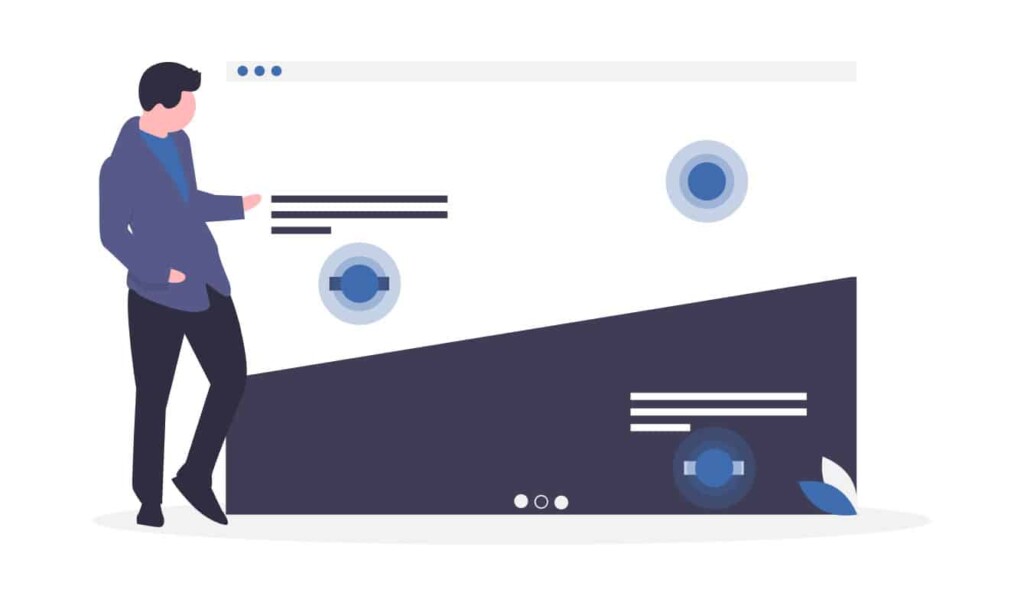In 3 Steps, Uncover the Link Between Your ROI & Your Website User Journey
One of your most important tools as a marketer is a website based on well-crafted user journeys. By identifying each step between the first contact with your brand and a conversion, user journeys show you how well you’re serving customers.
Unfortunately, many businesses aren’t taking the journey far enough. And if yours is one of them, you’re missing out on essential information.
Effective user journeys depend on building a deep understanding of your audience and how they make decisions. Customer personas, user journeys, and their corresponding marketing strategies are only valuable when you can translate that work into a meaningful return on investment.
Calculating the ROI isn’t as easy as pushing a button. However, by following these three steps, you can tell a more compelling story when it’s time to showcase the success of your marketing.
Show How the Website User Journey Drives ROI in 3 Steps
1. Develop Accurate User Journeys With In-Depth Research
Your user journeys should strive for an all-encompassing picture of your customers and how they have discovered your brand. Marketers tend to focus on user journeys as the path a design creates through their website or app. However, user journeys should be viewed more holistically to reflect the real-world experience every customer has with your brand.
User journeys begin when a customer first connects with your business, such as contacting your call center or walking into a storefront. But the start of a user journey can also be more abstract. Talking to friends about an upcoming decision that brings up your brand’s name marks another start to a user’s journey.
Regardless of where your customer first encounters your brand, you should identify the behaviors, questions, or pain points users experience up to that point. Then you can build a journey map that reflects how they interact with your business. If you don’t account for the stages outside of the digital world, your website will also miss that crucial step.
For example, if your brand manages senior living facilities, a key part of your customer’s journey involves visiting your physical locations. As you’re planning a website redesign, you need to incorporate details about where to find your facilities and allow users to schedule appointments to anticipate their needs.

Audience Identification Is the First Step of Defining a Website User Journey
Before you can create a website user journey, you need to gather as many details as possible about your customer. User personas are built by demographic details such as age, gender, and income, but the information you need is also psychographic. What does your user like and dislike? What are their goals?
As these details coalesce, you create audience personas that form the basis of your user journeys. For financial institutions, learning these details about your customer becomes a key factor in increasing retention rates. Understanding where your customers are in their financial lives enables you to create user journeys that inform digital experiences. Ones that anticipate their needs.
Understanding your audience takes time and research. Customer surveys, interviews with customer-facing internal teams, and market analyses are all useful ways to look beyond broad personas for the details about your users’ goals and expectations.
Buyer’s Journeys Form the Framework of Effective User Journeys
User journeys in ecommerce are relatively straightforward: A customer hears about a pair of shoes and goes online to buy them. Though this kind of buyer’s journey has a shorter timeline than B2B or services-oriented businesses, its structure is still instructive for companies and institutions that offer services requiring more consideration.
A buyer’s journey includes four stages:
- Awareness: User recognizes a problem they need to solve.
- Consideration: User evaluates their options.
- Decision: User decides on a way forward and vets different brands, ultimately choosing their solution.
- Implementation: After deciding, the user begins deploying or using their selected solution.
These stages are not always a one-to-one match for what your business provides. But once you’ve mapped out the steps in a buyer’s journey for your customer, you’ll recognize the decisions that trigger their move from one stage to the next with your brand.
2. Align Your Conversion Strategy with Your User Journey
Your conversion strategy hinges on targeting user decision points at each stage of their journey. But you have to remember that every user journey includes multiple points of conversion.
Marketers often default to thinking a conversion equates to making a sale or initiating contact with your sales team. But within a user journey there are micro-conversions along each step. Your conversion strategy needs to reflect that full gamut.
When visitors come to your website, they aren’t always ready to make a major decision, such as applying for a mortgage. But your site should offer conversion opportunities that align with the life cycle of that decision.
For example, users can sign up for a newsletter dedicated to first-time homebuyers or subscribe to a regular email alert that watches mortgage rates. Then, as your customer becomes more informed, they’ll have more trust in your brand based on those interactions.
The points during a website user journey that take users further down your brand’s conversion funnel are trackable on digital platforms. Once you know how well your site moves users along in their journey, you’re able to identify the conversions that deliver results for your business — and the ones that don’t.
3. Calculate ROI by Mapping Conversions to Revenue
Assigning a value to your website conversions marks the final hurdle, and it’s a tough one for many companies to clear . Conversion rates often aren’t so simple to identify for B2B and client-services businesses, and transforming website data into dollars requires significant research.
For example, financial institutions know the percentage of people who convert by hitting a button to apply for a mortgage. Of those customers, the bank also knows the percentage of loans that close and their dollar amount. By working backward from that dollar amount to your conversion point, the institution can determine their customer value. In this case, it’s based on their average number of loan customers versus the number coming from the site.
Calculating customer value is complicated, but the effort allows you to determine your ROI. Imagine your bank has run a paid media campaign to promote credit card signups. You know the ROI of the user journey you created by factoring the cost of the ad with the percentage of completed online application, the number who qualify for credit, and how much that customer is worth to your bank.
Here’s the good news: Once you’ve done the math for your services, turning these calculations into a report gets much easier. Google Analytics allows you to assign a Goal Value to a conversion point and clearly indicate what a pageview, button click, or form completion is worth. When it comes time to present your marketing budget to the board, Google Analytics generates a clear picture of your success and/or areas of need.
Without a clearly defined user journey, your path toward demonstrating your marketing performance becomes a lot more nebulous.
